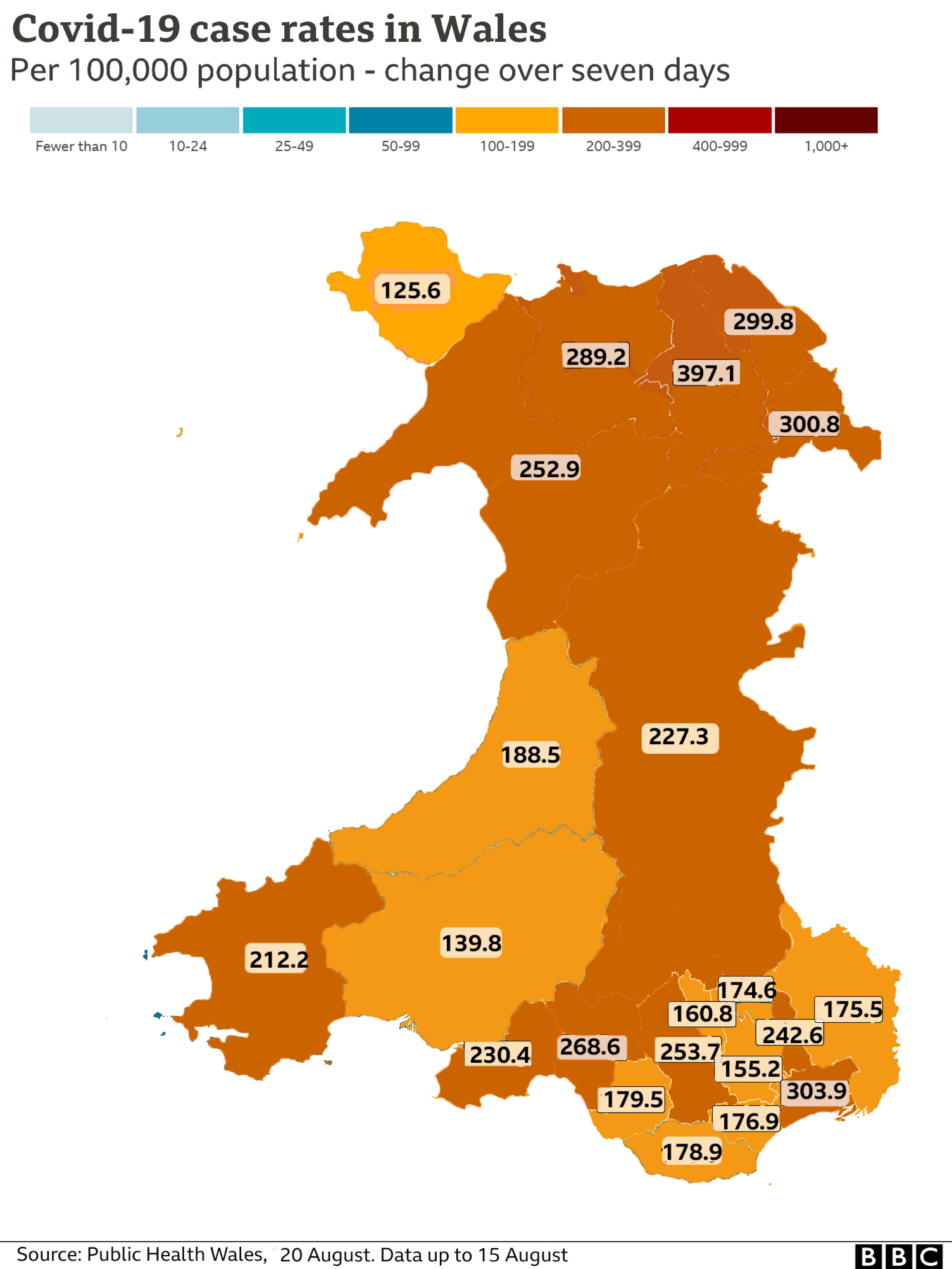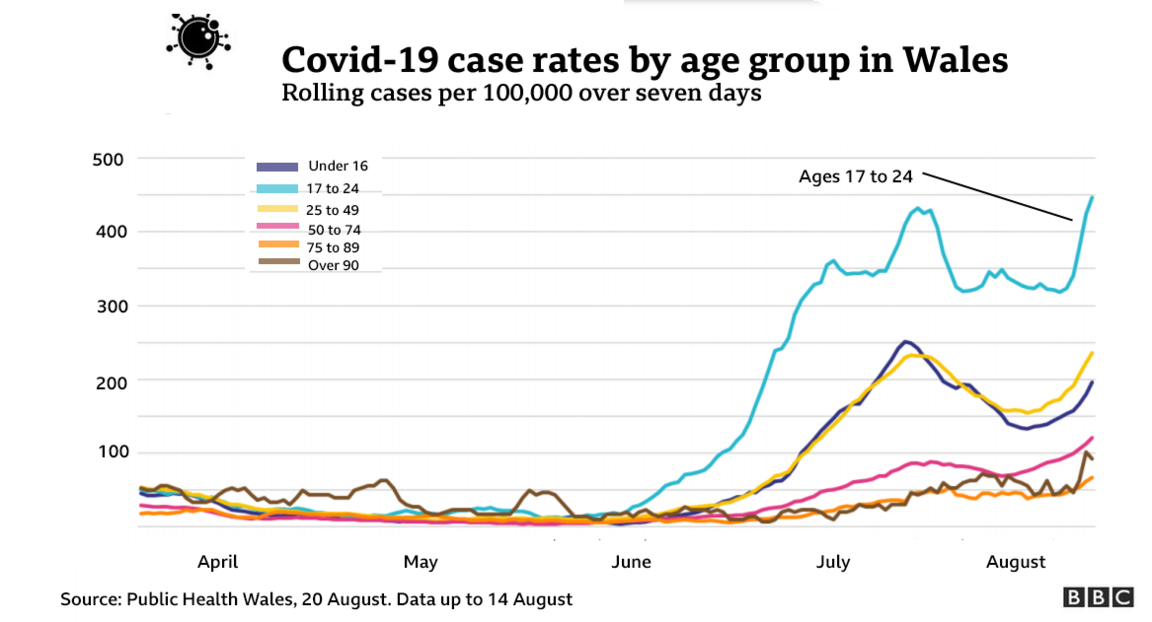Covid infections in Wales estimated to be rising
- Published

Just under 6,600 vaccines were given in Wales on Thursday
Wales is the only nation in the UK where Covid-19 is estimated to be rising, according to a weekly survey by the Office for National Statistics.
It estimates that 23,500 people had Covid-19 in Wales.
The ONS takes thousands of swab samples in Wales, so this can pick up people who may not know they have Covid.
Cases based on testing show another rise, although hospital admissions and deaths remain low compared with the same point in the second wave.

What does the infection survey tell us?
The ONS estimates, external that one in 130 people in Wales had Covid in the week ending 14 August. That is 0.77% of the population.
This is an increase on the previous week's estimate which was that 14,100 people had Covid.
Analysis of tests among different ages show the estimate is 1.6% of 10-year-olds are infected and 0.89% of 20-year-olds, but it drops to 0.34% of 40-year-olds and 0.2% of 60-year-olds.
For the rest of the UK, the estimates are that infections are continuing to decrease in England and Scotland and are uncertain for Northern Ireland.
ONS estimates infections at one in 80 in England, one in 50 in Northern Ireland and in Scotland it is estimated at one in 200.


What about positive tests?
The Wales case rate has risen to 226.1 cases per 100,000
This is a little higher than at the same point in the second wave - but the impact on hospitals and deaths is not the same
The average number of cases is now 1,018 a day, compared with 650 a day the week before
Denbighshire still has the highest case rate, but Swansea, Pembrokeshire, Newport and Rhondda Cynon Taf show the most noticeable increases
All communities - when Wales is broken down into 410 local areas - have had at least three Covid positive tests in the past week

Cases among younger age groups continue to rise
Higher case rates among the under-25s were the driver of rising rates we saw in some areas in early July - and they are now as the case rates rise again.
We can see from the latest Public Health Wales (PHW) breakdown that cases among under-25s are rising in 18 out of the 22 local authority areas of Wales.
The highest proportional rises were in Rhondda Cynon Taf and Pembrokeshire, with noticeable rises also among the under-25s in Ceredigion and Torfaen.
In Pembrokeshire 58% of new positive tests were among the under-25.
The highest case rate for under-25s remains in Denbighshire, up again to 624 cases per 100,000 - that is 167 positive tests in the most recent week or 46% of all local positive tests.
Friday's PHW figures show 56% of the latest reported cases were among under-30s.
It comes as vaccinations are now being offered to 16 and 17-year-olds in Wales, with 24,433 already having a first dose.

Hospital numbers edge up but comparatively low
Overall hospital admissions, including suspected and recovering Covid patients, have risen 9% in the past week on average - the highest numbers since early May but this remains relatively low,
Although the number of Covid patients in critical care or on ventilation - 29 - is at its highest point yet in the third wave, this is still 80% below the peak of the second wave.
Admissions of confirmed or suspected Covid patients have remained fairly steady over the past fortnight.


Looking at the same point in the second wave, we can see how Covid admissions were running four times higher.
This was in November, a month before the vaccination programme got under way.
When we just look at patients testing Covid-positive, there were 165 across hospitals in Wales on Thursday.
Betsi Cadwaladr health board hospitals had 42 of these and Cardiff and Vale had 36, with Aneurin Bevan and Cwm Taf Morgannwg not far behind.
The average number of confirmed Covid-19 patients was 139 on 19 August, a 5% rise on the week before.
At this point in the second wave, there were 1,018 confirmed Covid patients in hospital.

What else have we learned on Friday?
Public Health Wales has reported four deaths - two in Swansea Bay and one each in the Betsi Cadwaladr and Aneurin Bevan areas. One death occurred on Tuesday, two last Saturday and one a week ago.
There have been 10 deaths in the past seven days, an average of 1.4 a day. The average at this point in the second wave was 24 deaths a day.
The number of people fully vaccinated rose to 2,156,653 or 68% of the total population.